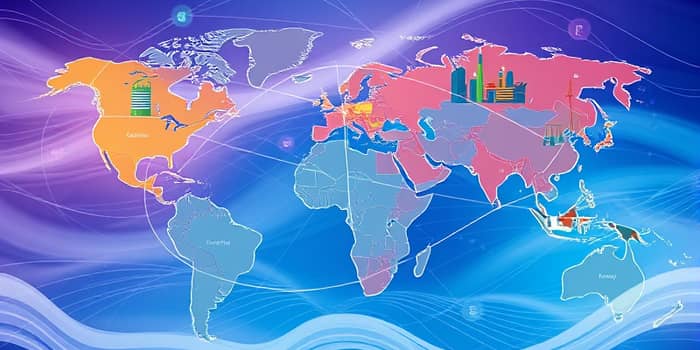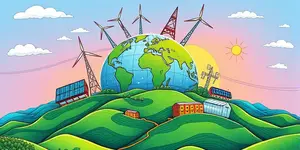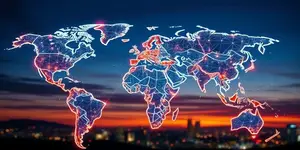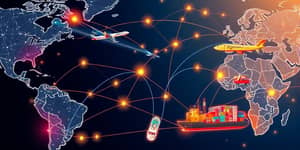
As global trade tensions escalate in 2025, companies are rethinking where and how they produce goods. The interplay of tariffs, retaliatory measures, and strategic policy shifts has sparked a profound transformation in supply chains worldwide. In this article, we explore the forces driving the emergence of neutral manufacturing hubs at the center of new trade routes, and provide actionable insights for businesses seeking to adapt and thrive in a rapidly evolving environment.
In early 2025, the United States imposed sweeping new tariffs on steel, aluminum, electronics, and machinery imports. A 25% duty on steel and aluminum aimed at key partners, including Canada, Mexico, and China, reverberated through critical industries such as automotive, construction, and aerospace. Canada retaliated with 25% duties on $155 billion worth of U.S. goods, while Mexico threatened to follow suit if negotiations faltered.
These measures are forecast to impose an additional $120–$225 billion annual cost burden on American consumers and businesses. Beyond the headline rates, firms now grapple with elevated logistics, compliance, insurance, and legal expenses. For example, automakers sourcing stamping and casting components from Canada report cost increases of up to 15%, forcing price adjustments and supply chain redesigns to preserve margins.
Faced with economic headwinds and geopolitical risks, multinational corporations are diversifying their production footprints. The traditional model of concentrated, centralized manufacturing is giving way to fragmented networks designed for agility and risk mitigation. Companies are adopting four core strategies to navigate these challenges:
Tariff hopping has driven electronics assemblers to shift mobile phone production from China to Vietnam, saving millions in duties. Meanwhile, nearshoring has boosted assembly lines in Mexico for U.S.-bound appliances, though recent duties are limiting some advantages. Reshoring efforts in Germany and the U.S. prioritize high-value parts such as aerospace turbine blades, focusing on quality and supply security over low-cost labor.
Neutral manufacturing hubs—regions outside the most volatile tariff zones—are emerging as preferred destinations for FDI. These hubs offer competitive cost structures, stable policy environments, and access to multiple markets without punitive duties. Major beneficiaries include:
For instance, Vietnam recorded a 30% surge in greenfield FDI inflows in early 2025, while India’s automotive parts sector grew exports by 18%. In Europe, Basque Country’s energy-efficient factories and Lombardy’s robotics labs exemplify the high-end innovation that attracts premium investors.
Selecting an optimal site for new manufacturing requires a holistic analysis of multiple strategic dimensions. Key criteria include:
Additional considerations such as legal transparency, port capacity, and environmental regulations can tilt decisions. Companies that integrate digital twins and Industry 4.0 technologies can further enhance operational agility and future-proof investments, creating supply chain resilience and sustainability advantages.
The table highlights a notable pivot: while China cedes low-cost manufacturing share, ASEAN and India accelerate ahead with robust investment gains.
Beyond mere cost arbitrage, emerging hubs are differentiating themselves through aggressive investments in renewable energy, circular economy practices, and advanced digital tools. Governments offer incentives for solar-powered facilities, waste-to-energy initiatives, and zero-carbon certification—aligning with global ESG commitments.
Networks such as the World Economic Forum’s Global Network of Advanced Manufacturing Hubs drive collaboration on regulation, workforce training, and technology transfer. In regions like Denmark and Quebec, pilot projects for autonomous assembly lines and carbon capture in factories showcase how investment in local ecosystems can cultivate high-value, sustainable manufacturing nodes.
Despite significant promise, new manufacturing landscapes carry inherent risks. Over-reliance on a single neutral hub can create fresh exposure to local disruptions—ranging from labor disputes to natural disasters. Infrastructure bottlenecks may emerge as rapid build-out outpaces roads, ports, and power grids.
Trade policies also remain uncertain. Planned reforms or shifts in leadership could reopen tariff disputes, prompting rapid strategic recalibrations. To hedge against volatility, firms should implement dynamic scenario planning, maintain diversified supplier networks, and invest in workforce upskilling across multiple regions.
Meanwhile, China continues to bolster domestic support through subsidies, tax breaks, and regulatory incentives to retain foreign partners. Its accelerated push into AI, quantum computing, and green energy demands that competitors remain vigilant and responsive to shifting competitive dynamics.
The reordering of global production in light of persistent trade conflicts is setting the stage for a more multipolar, regionally diversified and resilient manufacturing ecosystem. Neutral hubs are no longer peripheral players—they are becoming central nodes in reshaped trade flows and supply networks.
By proactively evaluating strategic criteria, embracing digital and sustainable practices, and maintaining diversified footprints, companies can not only navigate but capitalize on this historic transition. In an era of uncertainty, agility and innovation will define the next generation of global manufacturing leaders.
References













